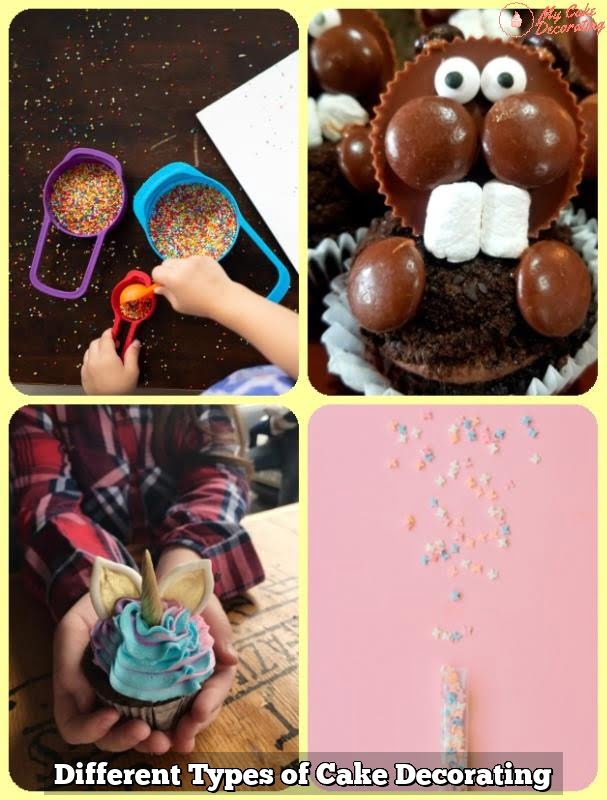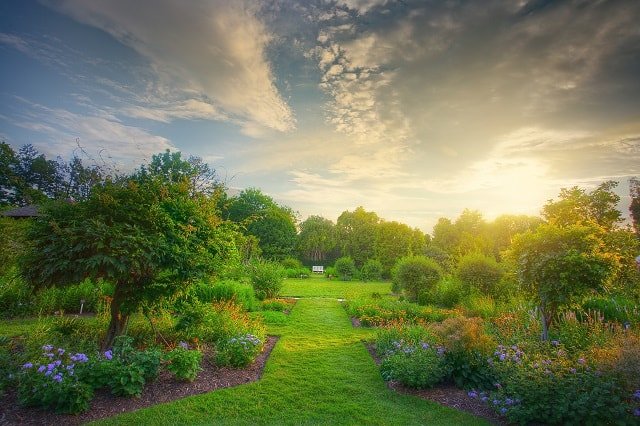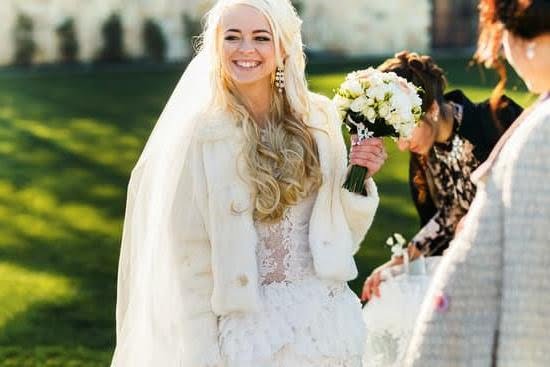What are the different types of cake decoration? Cake decoration plays a vital role in enhancing the overall appearance of a cake, turning a simple dessert into a stunning centerpiece for any celebration. From buttercream to fondant, royal icing to edible images, there are various techniques and designs that can be utilized to create beautiful and unique decorations on cakes.
Buttercream decorations offer endless possibilities, allowing for intricate piping designs, colorful swirls, and textured finishes. Fondant, on the other hand, provides a smooth canvas for creating elaborate shapes, ornate patterns, and sculpted figures. Royal icing is perfect for delicate details like lacework, fine piping, and intricate flooding techniques that add a touch of elegance to any cake.
In addition to these traditional methods, cake decorators can also experiment with using fresh flowers for a natural and sophisticated look, chocolate decorations for a rich and decadent touch, or personalized toppers made from various materials to add a personal flair. Each type of decoration brings its own unique style and charm to the table, allowing bakers to showcase their creativity and create memorable desserts for all occasions.
Buttercream Decorations
Buttercream frosting is a versatile and popular choice for cake decoration due to its smooth texture, ability to hold intricate designs, and delicious taste. There are various techniques and designs that can be achieved using buttercream, making it a favorite among both amateur and professional bakers. One common technique is piping, where different piping tips are used to create beautiful shapes and textures on cakes. From simple rosettes to intricate borders, the possibilities with piping buttercream are endless.
Another popular buttercream decoration technique is the art of buttercream flowers. By using different petal tips, bakers can create stunning floral arrangements that add a touch of elegance to any cake. Whether it’s a bouquet of roses or a field of daisies, buttercream flowers are a delightful way to elevate the visual appeal of a dessert. Additionally, ombre designs using varying shades of buttercream have become trendy in cake decorating, adding depth and dimension to the overall look.
Buttercream can also be used for creating textured finishes like ruffles, waves, or even sharp edges on cakes. By adjusting the consistency of the frosting and applying different tools, bakers can achieve unique textures that add visual interest to their creations. Furthermore, incorporating colors into buttercream decorations through techniques like marbling or layering can result in eye-catching designs that beautifully complement the theme of any celebration.
| Benefits | Examples |
|---|---|
| Versatile | Rosettes, borders |
| Elegant | Buttercream flowers |
| Textured finishes | Ruffles, waves |
Fondant Decorations
Fondant has become a popular choice for cake decoration due to its versatility in creating intricate shapes, textures, and designs. One of the main advantages of fondant is its smooth and pliable texture, making it ideal for sculpting various decorations on cakes. From elaborate flowers to 3D figurines, fondant allows decorators to unleash their creativity and bring imagination to life on baked creations.
Embossing and Texturing
One of the unique features of fondant is its ability to hold intricate textures and embossed designs. By using embossing mats, rolling pins, or even your fingertips, decorators can create visually stunning patterns on fondant-covered cakes. Whether it’s a lace-like pattern for a wedding cake or a geometric design for a modern birthday cake, the possibilities are endless when it comes to adding depth and dimension with fondant decorations.
Cutouts and Appliques
Fondant also lends itself well to cutout decorations and appliques that can be layered onto cakes for a bold visual impact. With cookie cutters or specialized cutters designed for fondant, decorators can create shapes like hearts, stars, letters, and more to personalize cakes for any occasion. These cutouts can be further embellished with edible paints, luster dusts, or edible markers to add color and detail to the overall design.
Modeling Figures and Sculptures
For those looking to take their cake decoration skills to the next level, fondant provides an excellent medium for sculpting figures and sculptures. From cartoon characters to lifelike animals, fondant allows decorators to create detailed and expressive pieces that can serve as focal points on cakes. By kneading different colors together or using food-safe sculpting tools, artists can bring whimsical or realistic elements to their cake designs with fondant decorations.
Royal Icing Decorations
Royal icing is a versatile and popular choice for cake decorators looking to create intricate and delicate designs on their cakes. This type of icing is made from a mixture of confectioners’ sugar and egg whites or meringue powder, resulting in a smooth and stiff consistency that is perfect for piping.
One of the most common uses of royal icing is for creating piped decorations such as floral patterns, borders, and lettering on cakes. With the right piping tips and techniques, decorators can achieve impressive and detailed designs that elevate the overall look of their creations.
In addition to piping, royal icing can also be used for flooding, which involves filling in larger areas of a cake surface with a smooth layer of icing. This technique is often used to create colorful backgrounds or to achieve a seamless finish for cake designs. By adjusting the consistency of the royal icing, decorators can control the flow and thickness of the flooded areas, allowing for endless creative possibilities.
Furthermore, royal icing is also commonly used for lacework decorations on cakes, adding an elegant and intricate touch to any design. By using lace molds or freehand piping techniques, decorators can create stunning lace patterns that resemble delicate fabric overlays on the cake’s surface.
Whether you’re looking to add intricate details to a wedding cake or create whimsical designs for a birthday celebration, royal icing offers endless possibilities for creative cake decorations. From delicate piping work to elaborate flood designs and intricate lace patterns, this versatile medium allows decorators to showcase their skills and imagination.
By mastering the art of royal icing decoration techniques such as piping, flooding, and lacework, aspiring bakers can take their cake decorating skills to new heights and impress friends, family, and clients with stunning custom creations that stand out from the crowd.
Edible Images
There are several ways to create and apply edible images to cakes. One common method involves printing designs onto edible paper using food-grade ink and then carefully applying them to the frosting or fondant-covered cake surface. Another technique involves using special machines called food printers that can directly print images onto thin sheets of edible paper. This allows for intricate and detailed designs to be transferred onto cakes with ease.
When using edible images for cake decoration, it is important to ensure that the images are stored properly to prevent them from drying out or becoming discolored. Additionally, handling the images with care during application is crucial to avoid tearing or damaging them in the process. Overall, edible images offer a versatile and convenient way to add a personal touch to cakes, making them perfect for any celebration or event.
- Printed designs on edible paper
- Application onto frosting or fondant
- Use of food printers for intricate designs
Fresh Flowers
When using fresh flowers as cake decorations, it is essential to ensure that they are food-safe and free from pesticides or chemicals. It is recommended to source flowers from organic growers or florists who specialize in providing edible flowers for culinary purposes. Before placing the flowers on the cake, it is crucial to wash them thoroughly and remove any stems or leaves that may come into direct contact with the frosting or cake surface.
One popular way to incorporate fresh flowers into cake decorating is by creating cascading floral arrangements that flow down the sides of a tiered cake. This creates a romantic and whimsical look that is perfect for weddings or garden-themed events.
Alternatively, simple floral placements on top of the cake can add a pop of color and freshness without overwhelming the overall design. Whether you opt for bold blooms like roses and peonies or delicate petals like baby’s breath and lavender, fresh flowers bring a touch of nature’s beauty to any cake design.
- Choose edible flowers such as roses, pansies, violets, or carnations for safe consumption
- Coordinate the flower colors with the overall theme or color scheme of the event
- Consider using organic edible flower petals for a subtle yet elegant decoration
Chocolate Decorations
In addition to using molds, chocolate shavings can also be used to add texture and visual interest to a cake. Whether you opt for delicate curls or more rustic shavings, chocolate can elevate the look of your dessert. Another creative way to incorporate chocolate into your cake decorating is through ganache drizzles.
Ganache is a mixture of cream and chocolate that can be poured over a cake for a smooth and glossy finish, adding both flavor and visual appeal. Drizzling ganache in different patterns or designs can take your cake decorating skills to the next level.
When working with chocolate decorations, it’s important to consider factors like temperature and handling techniques to ensure the best results. Experimenting with different types of chocolate, from dark to white to milk, can also lead to unique and eye-catching decorations for your cakes. Whether you’re creating a simple yet elegant design with shavings or going all out with intricate molded figures, chocolate decorations offer endless possibilities for creativity in cake decorating.
| Technique | Description |
|---|---|
| Chocolate Molds | Create beautiful shapes and figures for cake decoration. |
| Chocolate Shavings | Add texture and visual interest with delicate curls or rustic shavings. |
| Ganache Drizzles | Pour smooth and glossy ganache over cakes for added flavor and visual appeal. |
Personalized Toppers
Personalized cake toppers have become a popular trend in the world of cake decoration, allowing individuals to add a unique and personalized touch to their special occasion cakes. These toppers are typically custom-made from materials such as acrylic, wood, or paper, offering a wide range of designs and styles to suit any theme or event.
Whether it’s a birthday celebration, wedding reception, or anniversary party, personalized cake toppers can instantly elevate the overall look of a cake and make it truly memorable.
Acrylic Toppers
Acrylic cake toppers are a popular choice for many due to their versatility and durability. These toppers can be customized with names, dates, or special messages using various fonts and colors. With the ability to be laser cut into intricate designs, acrylic toppers provide a modern and sleek aesthetic that can complement any cake design. Additionally, acrylic is easy to clean and can be reused for future celebrations.
Wooden Toppers
Wooden cake toppers offer a rustic and natural charm that is perfect for themed events like country weddings or outdoor gatherings. These toppers can be crafted from different types of wood and personalized with engravings or paint. From elegant script fonts to whimsical motifs, wooden cake toppers add warmth and character to any cake display. Plus, they can double as keepsakes after the event, serving as a lasting memento of the special occasion.
Paper Toppers
Paper cake toppers are ideal for adding a pop of color and creativity to cakes without breaking the bank. Made from cardstock or specialty paper, these lightweight decorations can be customized with intricate patterns, images, or 3D effects. Whether it’s delicate floral cutouts for a bridal shower or playful cartoon characters for a child’s birthday party, paper cake toppers offer endless possibilities for creating fun and festive designs that will delight guests of all ages.
Conclusion
In conclusion, cake decoration plays a crucial role in elevating the visual appeal of a cake and making it truly special. From buttercream to fondant, royal icing to edible images, fresh flowers to chocolate decorations, and personalized toppers, there is a wide array of techniques and materials available to unleash your creativity in decorating cakes. Each type of decoration offers unique possibilities for adding texture, color, and design elements to cakes for various occasions.
Experimenting with different types of cake decorations allows individuals to express their personal style and creativity while adding a personalized touch to their baked creations. Whether you are looking to create a whimsical birthday cake, an elegant wedding cake, or a festive holiday dessert, the possibilities are endless when it comes to decorating cakes.
By trying out new techniques and combining different types of decorations, bakers can craft their own unique masterpieces that are sure to impress both visually and taste-wise.
So next time you have a special event or celebration coming up that calls for a delicious cake, don’t hesitate to explore the world of cake decoration and try your hand at different techniques. Whether you opt for the classic elegance of fondant decorations or the playful charm of personalized toppers, let your imagination run wild and create a stunning showstopper that will leave your guests in awe.
Remember, the beauty of cake decoration lies in its ability to transform simple cakes into works of art that not only look amazing but also taste delightful.
Frequently Asked Questions
What Are the 7 Different Cake Decorating Techniques?
There are seven different cake decorating techniques that are commonly used to create beautiful and intricate designs on cakes. These techniques include piping, fondant decorating, buttercream flowers, stenciling, using edible images, airbrushing, and using edible embellishments.
What Are the 5 Kinds of Cake Decorating?
When it comes to cake decorating, there are five main kinds of techniques that bakers can use to make their creations visually appealing. These include buttercream decoration, royal icing decoration, fondant decoration, gum paste decoration, and marzipan decoration.
What Are 3 Types of Cake Toppings?
Cake toppings play a crucial role in adding flavor and texture to a cake. Three types of cake toppings that are popularly used include frosting or icing, glazes (such as chocolate ganache or fruit glazes), and sweet decorations like sprinkles or nuts. Each type brings its own unique touch to the final presentation of the cake.

Welcome to my blog about home and family. This blog is a place where I will share my thoughts, ideas, and experiences related to these important topics. I am a stay-at-home mom with two young children. I hope you enjoy reading it! and may find some helpful tips and ideas that will make your home and family life even better!





